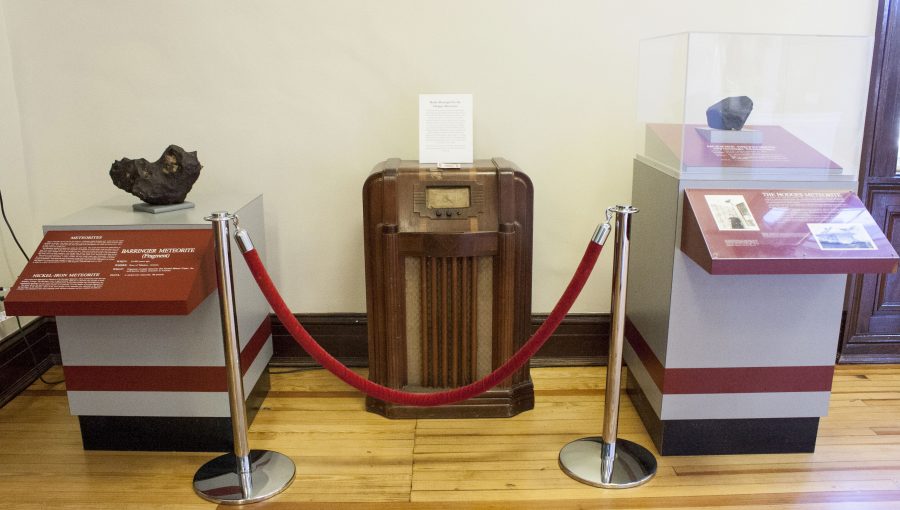Now, it sits on the second floor of The Alabama Museum of Natural History on The University of Alabama campus. Under a glass case, the burnt exterior is covered in miniature hills and valleys. Next to it, there is a clear impact site on the radio, where wood is missing and the glass over the dial is cracked.
Todd Hester, the museum naturalist, begins the story with the meteorite’s descent to Earth.
“So when the larger chunk of this meteorite encountered the resistance from the thick atmosphere, it got super-heated and started to expose the fissures and started to split up,” he said. “So the charcoal appearance and potholes on its surface are the result of that.”
After breaking through the roof, bouncing off the radio, and hitting Hodges, the story goes that the whole town came to see what happened.
Elizabeth McFarland, 20, works at the museum as an AmeriCorps VISTA and is a full-time student majoring in archeological anthropology. She continues the story with ease.
“So her neighbors came over because they saw the streak and thought they were under attack since it was during the Cold War and all,” she said. “In photos, she holds a rag underneath it because she though it was bad juju.”
Allie Sorlie, the education outreach coordinator, tells of the aftermath of the event.
“The U.S. Air Force ended up taking it to Montgomery and did tests on it to make sure it was a meteorite,” she said. “They were going to keep it, but the town signed a petition and got it back.”
After that, there was a legal dispute between who owned the meteorite. The Hodges’ house was rental and the property owner, Berdie Guy, wanted the meteorite to repair the house. After a long battle in court, the meteorite was given to Hodges since it made physical contact with her.
There was also another piece of the meteorite that landed in the area. A farmer who sold it to the Smithsonian found it in a ditch. They call their piece the “Sylacauga Meteorite.” However, the Alabama Museum of Natural History holds the part that actually struck a human and that is, in part, why it is called the “Hodges Meteorite.”
After the event, Hodges was interviewed by Time Life magazine and thrust into fame. She even got into the game show “I Got a Secret.” Sorlie claims that the contestants guessed her quickly.
Later, she donated it to the Alabama Museum of Natural History – where it sits on display today.
“You probably won’t want a meteorite named after you,” said Sorlie with a grin. “Because maybe that means you got to know it pretty well.”









